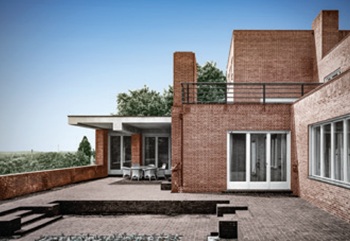The Coal Research Establishment
Coal has been the focus of experimentation at the laboratories at Stoke Orchard, Gloucestershire since the 1930s. Research and development into coal has been managed by a number of bodies since then, starting with the Government Fuel Research station, but the Coal Research Establishment (CRE) has become synonymous with the site.
British Coal’s Director of Research Jacob Bronowski set up the CRE in 1950 to investigate alternative technologies to improve the value of the energy produced from burning coal.
One of the CRE’s most notable breakthroughs was a coal liquefaction process which produced synthetic oil that could be used to power motor engines, including a demonstration Ford Torino which was kept at the site. Today, a number of international research stations are pursuing new research projects into coal liquefaction.
Gasification is a key part of the liquefaction process. This was pioneered successfully by CRE in the 1950s, using coal seams at Newman Spinney. Instead of burning coal as a fossil fuel, it is chemically transformed into synthetic natural gas (SNG). In later years CRE pursued clean coal projects, which would trap the carbon in a usable form that could be exploited in other chemical processes.
When the CRE joined forces with Gastec, a Dutch company, in 1994, it added gas and gas appliance testing to its portfolio.
Today it is part of the Kiwa Group, a global testing, inspection and certification organisation. Kiwa employs 150 people in the UK, servicing industries as diverse as construction, agriculture, food, boiler and stove manufacturing. Pioneering research is still undertaken at the Kiwa Gastec labs just outside Cheltenham, predominantly into hydrogen and other gases.
[edit] Related articles on Designing Buildings Wiki
Featured articles and news
Design and construction material libraries
Material, sample, product or detail libraries a key component of any architectural design practice.
Construction Products Reform Green Paper and Consultation
Still time to respond as consultation closes on 21 May 2025.
Resilient façade systems for smog reduction in Shanghai
A technical approach using computer simulation and analysis of solar radiation, wind patterns, and ventilation.
Digital technology, transformation and cybersecurity
Supporting SMEs through Digitalisation in Construction.
Villa Wolf in Gubin, history and reconstruction. Book review.
Construction contract awards down £1bn
Decline over the past two months compared to the same period last year, follows the positive start to the year.
Editor's broadbrush view on forms of electrical heating in context.
The pace of heating change; BSRIA market intelligence
Electric Dreams, Boiler Realities.
New President of ECA announced
Ruth Devine MBE becomes the 112th President of the Electrical Contractors Association.
New CIAT Professional Standards Competency Framework
Supercedes the 2019 Professional Standards Framework from 1 May 2025.
Difficult Sites: Architecture Against the Odds
Free exhibition at the RIBA Architecture Gallery until 31 May.
PPN 021: Payment Spot Checks in Public Sub-Contracts
Published following consultation and influence from ECA.
Designing Buildings reaches 20,000 articles
We take a look back at some of the stranger contributions.
Lessons learned from other industries.
The Buildings of the Malting Industry. Book review.
Conserving places with climate resilience in mind.






















